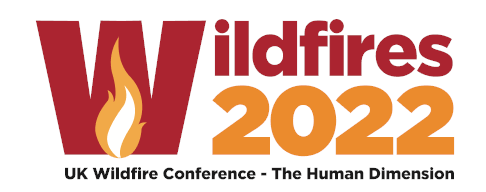
By Henrietta Appleton, GWCT Policy Officer
“In a city a fire put out is a problem solved; in the countryside a fire put out is a problem put off.”[1]
I recently wrote about how our APPG had achieved a collective outcome through getting the right people in the right place asking the right questions. The EWWF Wildfire 2022 Conference in Belfast which I attended last week provided a similar belief that through constructive stakeholder engagement progress can be made. But there is an added dimension in respect of wildfire – and that is the right time. And that is now.
The focus of the conference was the “Human Dimension” of wildfire which included the need for stakeholders to work together to understand each other’s priorities and values so that decision-making can be optimised. Much of the emphasis on the need for a collective approach and shared responsibilities came from the Fire & Rescue Services (FRS). As the possibility of wildfire weather becomes an ever-present risk from Spring through to early Autumn[2] the FRS’ role has migrated from purely fire suppression (firefighting) to fire management and given this preparation and planning are key. Equally so is the need for a shift in policy focus from suppression to prevention[3].
So often policy acts as a barrier to progress or the ability to do the right thing – and in some cases is the cause of the problem as a single focus can lead to unforeseen (and unintended) consequences.
Policymakers present the need for a change of policy focus from suppression to prevention. In Europe (as opposed to other fire-prone continents/countries) there is a disconnect between expectations in the ability of the FRS to control wildfires and reality given that wildfire risk is an acknowledged consequence of climate change. In the UK we are getting to the point of no return (as one FRS officer said).
Prevention is not just about reducing ignitions. There has to be fuel management as well. In this regard the FRS recognises that land managers are key as they can teach the FRS and the other agencies involved how to undertake prescribed burns and manage them properly.
In areas like the South Wales valleys where vegetation management is no longer undertaken through sheep grazing the hillsides, the fuel load has increased risking high severity wildfires that burn into the peat releasing industrial pollutants into the air and water courses. Consequently, the FRS has introduced prescribed burns to break up the fuel load and increase the resilience of the landscape to wildfire events (in this area about 98% are due to arson). Wildfires are of real concern in this landscape as they can make the valley sides made up of coal mining waste unstable, resulting in landslides which can cause loss of life.
The challenge of changing wildfire policy from suppression to prevention (and the role that prescribed burning can play in this) is frustrating those on the ground. It is not only land managers who can see the need to manage the vegetation (fuel load), as this is often how the landscapes so valued for recreation were created, but also those who put their lives on the line to protect us from wildfires – the FRS.
[2] Perry, M. et al 2022 Past and future trends in fire weather for the UK. Nat. Hazards Earth Syst. Sci., 22, 559–575 https://doi.org/10.5194/nhess-22-559-2022